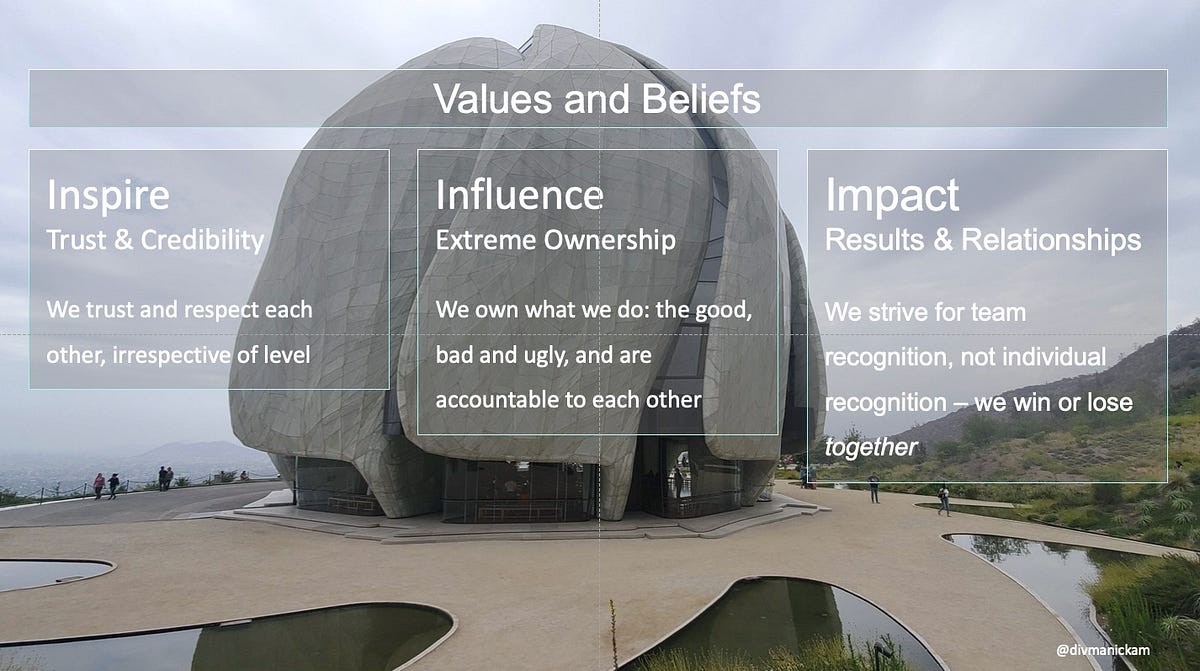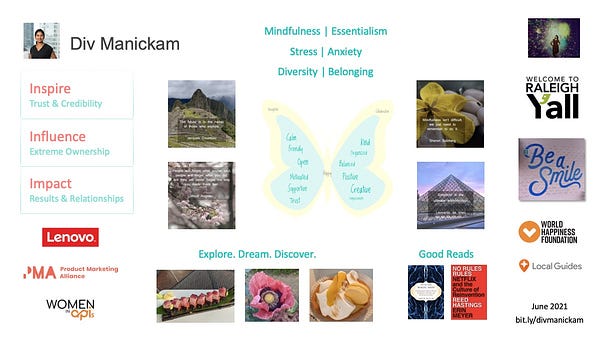When was the last time a candidate replied after the interview process and genuinely thanked you for the candidate experience even though they were not selected?
Today, I'm going to share a few lessons learned and templates for the candidate experience , from hiring and interviewing to onboarding new team members and career growth.
As a true product marketer, join me on a candidate journey - which can often, actually, be very similar to the buyer journey
In this article, I'll be focusing on:
- Interview 101: lessons learned
- How to refine the PMM interview process
- Onboarding reimagined
- Team culture reimagined
- Career growth reimagined
Interview 101: lessons learned
My first hiring in 2018 went like this:
I am the hiring manager. As long as one senior team member is interviewed and my manager is interviewed, that’s all we need to hire the right candidate. WRONG. That’s when I had to ask the tough questions:
- What is our team culture? What are our values?
- How do we make sure we're bringing in folks that bring diverse perspectives?
- How can we best complement our team skills etc.?
Refining the product marketing interview process
In my experience of scaling teams, here is what a refined interview process should look like:
- Prescreen with talent acquisition/HR partner (30–45minutes)
- Interview with peer/team member - Product Marketing/Product Management assessment (skill fit) (30–45minutes)
- Interview with the hiring manager - Team/culture fit (30minutes)
- Panel presentation with 5+ panelists across the team and extended/cross-functional teams (45minutes = 15min presentation, 30min Q&A)
- Interview with Executive/Senior leadership (30minutes)
Now, we're going to take a look at each of these phases in more detail but first, let's think about step 0:
Step 0
Most important is the weekly check-in with our core team - the folks involved in steps 1–3. Collectively, our team had six open roles. We engaged and built relationships with our talent acquisition team in Romania, Argentina, UK, and the US to find the right talent. We started with our job descriptions for both portfolio marketing and management .
Here are two examples for your reference:
- Job Description — Sr. Portfolio Marketing Manager (Band 9)
- Job Description — Sr. Portfolio Manager (Band 9)
Step 1: Prescreen with talent acquisition / HR partner
Our recruiter shares the interview timeline in the first prescreen meeting with the candidate. This is an important step because this conversation tells a lot about the company culture and what we're looking for in the role. When I interview, this step is where I start to help them understand the company.
Step 2: Interview with peer/team member - skill fit
This interview with our portfolio marketing or management expert is key because the person joining will be working very closely on a day-to-day basis with their peers. My senior team members are the right folks to assess if the candidate has the right skill set and be excited about what is necessary on a day-to-day basis.
Step 3: Interview with the hiring manager - team/culture fit
If they clear the step 2 round, the third round is an interview with me as their manager, and this is more about cultural fit, making sure that we have a good balance, and we are bringing on team members that are going to bring out the best in each other and support each other in tough times.
Team values and beliefs
This is my litmus test to understand what the candidate’s values are and if our team values and beliefs resonate with them.

Picture perfect introduction
'Picture perfect introduction' is a great way to introduce oneself outside of LinkedIn and resume. It’s important to know that we can have a good conversation and bring the best in each other.
I always believe in diversity, inclusion, and belonging and this was my way to bring my whole self to the interview. This is now my go-to when someone asks me: “Tell me about yourself”, from interviews to networking.

I always share my picture-perfect introduction and it’s a good icebreaker to make the interview less formal and more engaging and conversational. Just as much as we are assessing the candidate for the role, the candidate is evaluating if they want to be part of the team and work with the manager.
When I interviewed at Lenovo, my manager and I bonded over sushi, macaron, and flowers!
Step 4: panel presentation
For the fourth step - panel presentation - we share an assignment 7-10 days prior, with an expectation to prepare a presentation (spend 4–6 hours max).
Below are the templates for the panel presentation assignment:
- Portfolio Marketing — Messaging/Positioning, Go-to-market
- Portfolio Management — Launch, Market Intelligence
In the panel, we have anywhere from five to seven people across different teams. We had our portfolio marketing and management, the extended teams from enablement that this role would be collaborating with. This gives the candidate an opportunity to meet the extended team as well.
The panel presentation: 3 steps (60minutes)
- 15-minute presentation - on picture-perfect introduction (to learn about their interests and passions outside of work), value proposition, messaging, go-to-market for the product or service.
- 30 minutes for Q&A with the panel - to ask questions to the candidate and for the candidate to ask questions/share feedback with the panel. The intent is to engage with cross-functional teams and find the right candidate for the role. The panel has been crucial to making sure we're asking the right questions across the different touchpoints in their roles and responsibilities.
- 15 minutes for the panel to decide on the next steps. This is where the candidate would drop off the meeting and we assess candidate performance and expectations. Oftentimes, this step will be in feedback forms and adds to the time it takes to move the candidate forward. This has helped us streamline the interview process and capture collective input right away.
Step 5: Interview with executive/senior leadership
Once we complete this final step, we have an idea of the top two candidates, so the last step is an interview with our manager.
Hooray! The candidate has cleared through all these rounds and we're ready to extend an offer. And if we are both excited about the opportunity ahead and the offer is accepted, then that’s golden - we move forward with the onboarding process.
For the candidates that make it to the panel presentation, but are not selected as the final candidate, I took an action to personally thank them for their time and provide constructive feedback to help find their next role via email/follow-up meeting.
The interview process
Having been on the other side, about ten months ago, I was really particular on timing and setting the right expectations.
- How quickly did we respond from one interview to the other?
- Are we transparent with the candidate on expectations through the interview process?
- How many steps are there? And what does each step look like?
- Who is involved in the interview process?
- How can I make the interview process fun and engaging vs rapid-fire?
The hiring and interview process is a holistic experience. It’s about finding the right fit for the role. It’s about fostering relationships with candidates to find their next role.
Onboarding reimagined
What is the one thing you wish you had when you joined a new company?
We're all good at hiring - or we would like to think we are - but the true essence of hiring comes in the first week of onboarding for your new hire. Of course, how you hire and what the interview process looks like also has an impact on the candidate experience.
When I joined Lenovo, I had the 30,000 ft view of Lenovo 101, the evolution of the company, culture and D&I, benefits, and tools. But within my immediate ecosystem, I was lost, so when I had this opportunity to hire, I took steps to make sure we had a good onboarding experience for our new hires - the things I wish I had when I joined.
There was a lot of good training and onboarding at the top level but when it came to understanding what our organization specifically did in services, or what would my day-to-day look like, I was given a blank slate and I wished I had a better process. So I used my expectations and learning to put together an onboarding document for my new hires.
We divided the onboarding document into three parts:
The team
Sharing our Team Charter, what is it that we do, who does what, and how to think about our core values and beliefs and how it helps ground us in our day-to-day actions.
I was inspired by one of my team leaders who created an onboarding document for his new hire and that sparked ideas all around. And I put together this onboarding document with everything that I wished I had when I joined. And I think I got a similar sentiment from some of my team members who had joined in the past year who wished they had this document when they joined.
Then we go into team priorities and projects, talk about our objectives and key results (OKRs) and what are we aspiring to be.
Onboarding schedule
The second part is an onboarding schedule for the first week so that they have an idea of what to expect when they start on day one. I send the document to my new hire on Thursday, the week before, prior to them starting on Monday. This includes a 1:1 that I would schedule the week prior so that when they join, they are not trying to navigate our calendars. Most calendars fill out a week or two ahead.
Resources
We also included a section on resources. There’s a lot of content and material that sits in different systems and in a lot of people’s minds that I try to capture and distill down into the document.
This could be anything from the products and services to online courses through our learning and development tools. And we also include links to guidelines and instructions on how to access tools and systems that they may need on a day-to-day basis.
So that’s our onboarding document. I like to think of it as a living breathing document. Something that we keep building on every new hire that is joining our team and it will keep getting better. 👇
Portfolio Marketing and Management Onboarding
Team culture reimagined
We often talk about cultures and organizations as if it’s something that we can create and build with the right leader. But the truth is culture is something that is within a team, a group, or a set of individuals that are creating a future of togetherness.
After reading the No Rules Rules book, I was really encouraged to see that we can actually build, shape, and foster cultures the way they are supposed to be: “Bringing teams together to be our best selves”.
I started reading the book: The Culture Code: The Secrets of Highly Successful Groups to better understand what makes great teams click. And what are things that we should not do, so that we don’t disrupt a good culture?
I think it all comes back to my #1 philosophy in work and life: Trust. Without trust, there’s nothing left in a team.
It doesn’t matter what hierarchy or title you have as a leader if you cannot instill trust in each other and in yourself. And if there is no trust, then nothing else matters. Everything else is vaporware at that point.
That’s what I aspire to be. To be able to build trust in ways that are not written in books because it doesn’t quite exist yet, especially in large organizations where everyone is out to get a piece of the pie. Where everyone is thinking about power plays.
And that makes it very difficult for me to continue in an organization when such dynamics exist. In my previous roles, when trust with my manager or senior leadership went out the window, so did my decision to move forward and not let an unhealthy or toxic environment get the best of me and impact my health and wellbeing.
There will always be chaos and the hierarchy that supersedes good decision-making in large organizations. But something magical happened in December when we, as a team, started connecting and getting to know each other.
That was when trust started penetrating cross-borders across countries and we’ve started to become one team. And I was proud to be part of this one team where we had each other’s back.
And that’s when I knew that it wasn’t quite about what I could offer as the portfolio marketing/management leader, it was what I could do to empower my team and that’s all that mattered for me every day - it’s one step at a time.
To trust or not to trust?
We started with a few steps to foster trust and credibility within our team:
1. Curate a shared team charter so that we are part of a bigger mission and not just individual components.
2. Remove the hierarchy - the hierarchy hurts creativity and innovation.
When I crafted our team R&R, I removed the hierarchy structure as we had team members that didn’t report but had shared goals. I don’t believe in it and I don’t think hierarchy tells anything for better or worse. It seems more like an administrative need and not a fan of the pyramid hierarchy in any shape or form.
3. Bring us together as a collective outside of our day-to-day actions with mindfulness practices. With the Wise at Work mindfulness app, every team meeting starts with a three-minute mindfulness practice around teamwork, productivity & focus, setting intention, creativity, and calm.
This year, I came across Friday Pulse, which was a great way to share our weekly celebrations, thank you’s, frustrations, and ideas. We even had some fun getting to know each other and also have our own Spotify team playlist.
We enjoyed finding out what everyone’s hobbies are. The six weeks free trial brought us together in ways we wouldn’t have because there are enough differences in the world. All we need is a string of hope to belong together.
Career growth reimagined
Every leader gets the question, "What will it take for me to go from X to Y?" (aka promotion).
And most times, I don’t have a good answer. There were no clear career paths for portfolio marketing and management that I could find. So, I took inspiration from our PMA community and leaders who have shared best practices and this is an attempt to answer the question above.
Portfolio Marketing and Management Career Journey
Just as we have customer advocacy in the buyer journey, as leaders, we need to make the time to have quarterly check-ins with our team members on career growth and not just a conversation at the end-of-year performance review. And this should be in addition to our biweekly 1:1s - a dedicated time and space, and not mixed into other project discussions.
This framework helps to ask the questions:
- What are your aspirations?
- How can we help to go from X to Y?
With the Less is More: GROW and Personal OKRs framework, the career growth conversation has become more in-tune to understanding their focus areas and establishing personal OKRs.
What’s next?
In summary, with these three steps from hiring/interview to onboarding to career growth, let’s build the portfolio marketing and management teams of tomorrow.
Please share your best practices and I hope this is one step in the right direction to enhance our candidate, employee, and team experience.


















 Follow us on LinkedIn
Follow us on LinkedIn



.svg?v=36ab76060b)